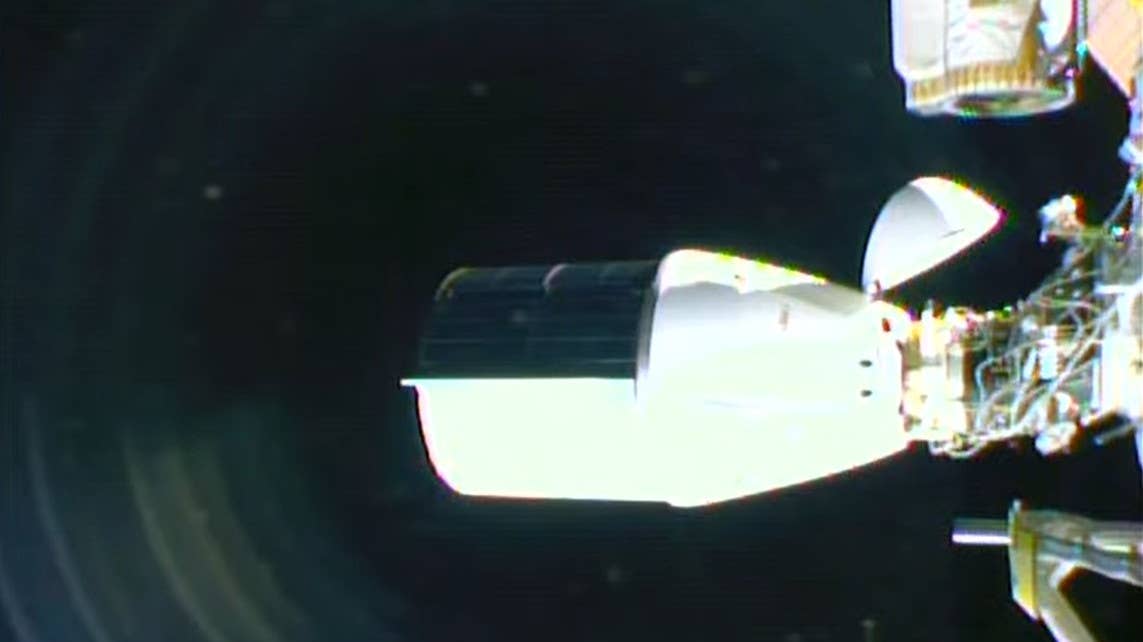SpaceX Dragon Gives ISS a Lift
NASA in June tapped the company to build the U.S. deorbit vehicle (DV) that will return the orbital laboratory to Earth in pieces at the end of the decade.

An International Space Station camera captures SpaceX’s Cargo Dragon spacecraft docked to the orbital laboratory’s Harmony module. [Courtesy: NASA]
At the end of the decade, NASA plans to retire the International Space Station (ISS) by dragging the orbital laboratory over a remote section of the Pacific Ocean and allowing atmospheric forces to rip it to shreds. Last week, the space agency learned a little more about the vehicle that will carry out the unprecedented maneuver.
On Friday, a SpaceX Cargo Dragon spacecraft boosted the space station’s orbit to gather data that will support the company’s development of a U.S. deorbit vehicle (DV). NASA awarded the firm a contract worth up to $843 million to design and build the vehicle, which it said will be a heavily modified version of the prolific Dragon.
NASA relies on Northrop Grumman’s Cygnus and the Russian Roscosmos’ Progress spacecraft to modify and maintain ISS orbit. Dragon, which flies routine cargo resupply missions to the orbital laboratory, would be the third vehicle with that capability. The U.S. DV, though, is being developed as the first spacecraft that can remove it from orbit entirely.
After docking to the ISS’ Harmony module and delivering more than 6,000 pounds of food, supplies, equipment, and experiments earlier this month, Dragon on Friday fired its Draco thrusters for about 12 minutes, shifting the station’s altitude a fraction of a mile. The adjustment was small, but it gave SpaceX the first insights into Dragon’s current orbit-altering capabilities and what the company will need to improve on.
SpaceX in July said the DV will require six times as much useful propellant and three to four times as much power generation and storage than Dragon. It will need enough fuel to launch and orbit for several months before dragging the ISS to its landing spot, with a splashdown projected for 2031.
Most of the orbital laboratory—and the DV—is expected to melt, burn up, or vaporize as it hurtles toward Earth. The debris will land in a narrow, 2,000-kilometer strip in an undetermined location in the Pacific Ocean.
Following its retirement, NASA expects the ISS to be replaced by a collection of commercial space stations in development by companies such as Blue Origin, Axiom Space, Northrop Grumman, and Starlab Space, creating a new low-Earth economy.
Like this story? We think you'll also like the Future of FLYING newsletter sent every Thursday afternoon. Sign up now.

Sign-up for newsletters & special offers!
Get the latest FLYING stories & special offers delivered directly to your inbox






